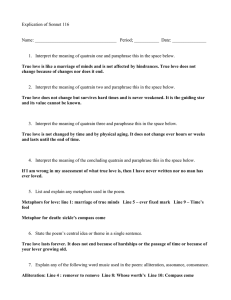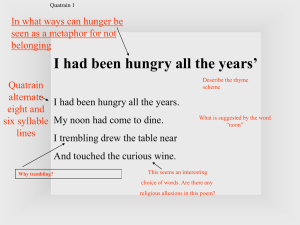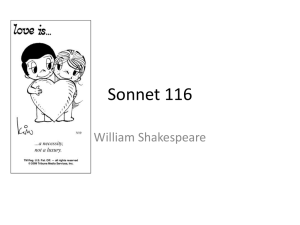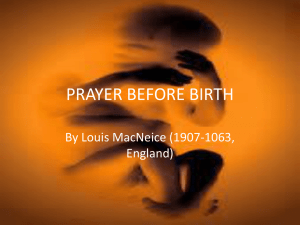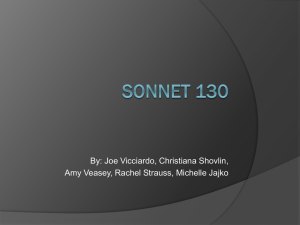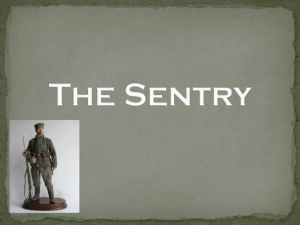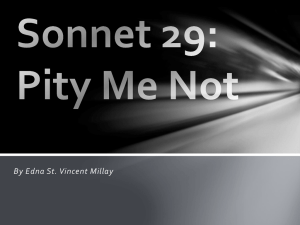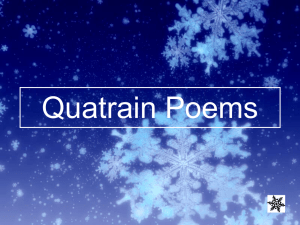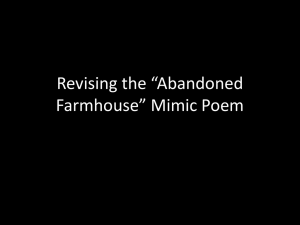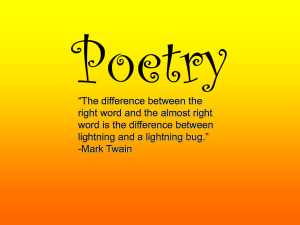*Pity me not because the light of day* by Edna St
advertisement
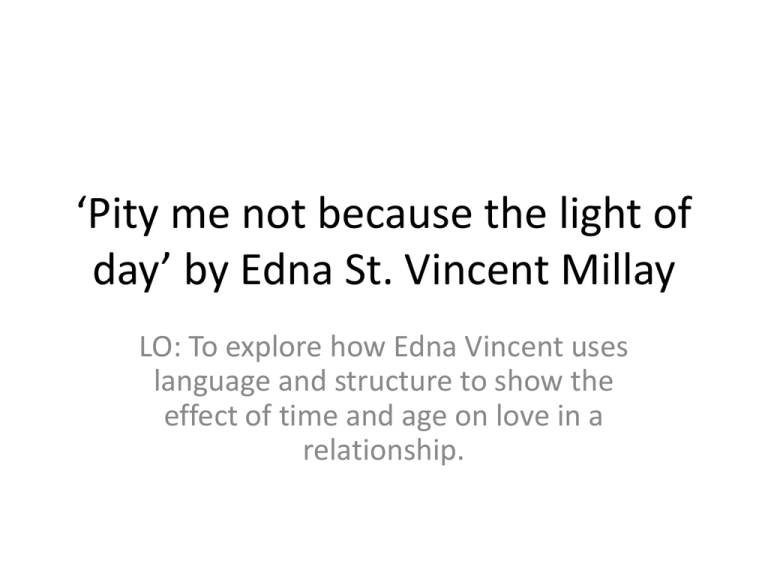
‘Pity me not because the light of day’ by Edna St. Vincent Millay LO: To explore how Edna Vincent uses language and structure to show the effect of time and age on love in a relationship. What’s it about? • This poem is about the loss of love and the breakdown of a relationship. • The images in the poem signifies the end of something, but also something that’s part of a cycle. • In this poem the poet realises that the one she loves did not love her long enough, in her heart she refuses to accept it. You Tube Daylight brings happiness but this does not last. 1st quatrain Pity me not because the light of day At close of day no longer walks the sky; Pity me not for beauties passed away From field and thicket as the year goes by; Poet doesn’t want sympathy from the listener Flowers die from fields as the year goes by. The Natural way of the world is for nothing to last forever. 2nd quatrain Forced These images all fade away from their original place (sunlight/ flowers) Pity me not the waning of the moon, Nor that the ebbing tide goes out to sea, Nor that a man’s desire is hushed so soon, And you no longer look with love on me. He doesn’t love her anymore. She expects no pity as she feels all men fall out of love. She believes this is natural (like the moon & tide) Wane = fade/ disappear/ vanish Ebbing = go out/ flow away Alliteration = quiet, unnoticed, Rapid. Alliteration reinforces length of time. 3rd quatrain Creates sound of wind Love is fickle and moves ‘like flowers in the wind’ This have I known always: Love is not more storm/attack Than the wide blossom which the wind assails, Than the great tide that treads the shifting shore, Strewing fresh wreckage gathered in the gales: Alliteration reinforces idea of deliberate and damaging effect nature has on things Alliteration strengthens Shifting nature of love. Tone changes slightly/ love compared to something more aggressive/ violent Pity me that the heart is slow to learn What the swift mind beholds at every turn. Rhyming couplet reveals that she feels she should be pitied, not for Pain of unrequited love, but for being naïve about love, towards Something that she knew would happen. Millay feels that the love men have for women finished as quickly as it starts. * Natural imagery used Compare to other poems that have • natural imagery • That deal with changing relationships over time How does structure show how relationships change over time? The Sonnet form allows the poem to be broken up into stages: 1st quatrain: all things end naturally (daylight, natural beauty.) 2nd quatrain: all things move away from their natural place (the moon, the tide, man’s desire for women) 3rd quatrain: tone changes slightly, love compared to something more aggressive and damaging. Rhyming couplet: Pity her because she is naïve towards something that she knew would happen (that his love for her would not last.) Essay question: Explain how the poet uses language and imagery to present her ideas about love in a relationship.
